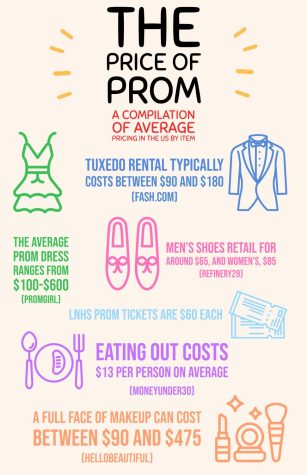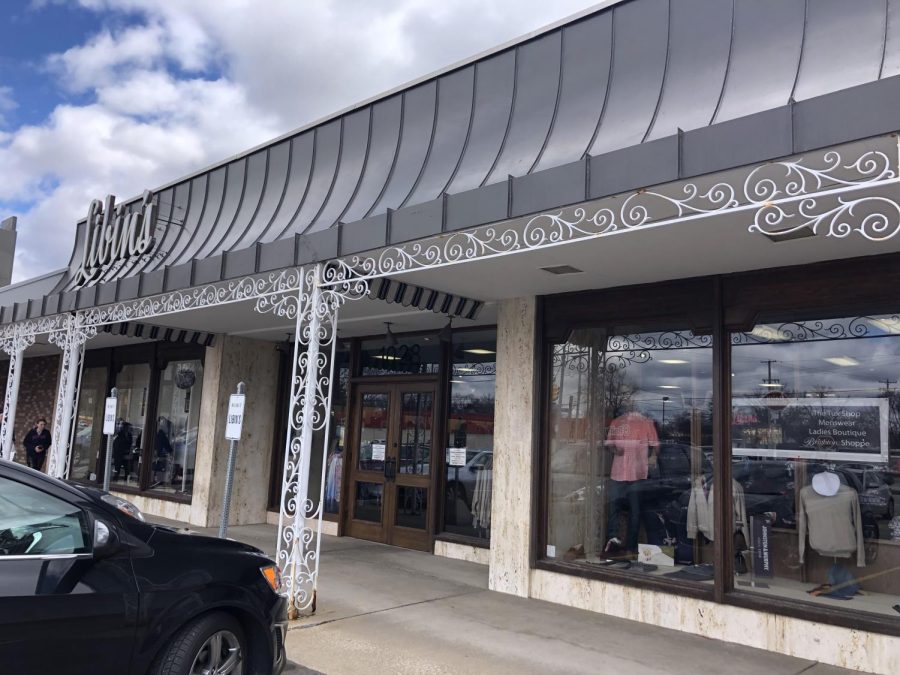Students share their opinions on the accessibility of prom
Credit: Milo Turner
Libin’s is a popular destination for KPS students looking for prom attire. The store sells a variety of both men’s and women’s clothing.
April 27, 2022
Prom is supposed to be a night to remember, providing students with the opportunity to dress up, meet up, and dance all evening with their friends and peers. However, for many students, money is a deterrent preventing them from enjoying the dance to its fullest, or attending altogether.
Prom took place April 23, at 8:00 p.m. The venue was the Fetzer Center, on Western Michigan University’s campus. Tickets for the event were priced at $60, and the same went for “guest passes” that juniors and seniors could buy and give to underclassmen or students from other schools.
The pricing came as a surprise to many upperclassmen this year.
Senior Rachael King is the Vice President of the Student Executive Board and helped organize the dance.
“I would definitely say that we should have spent more of our budget so that we didn’t have to have such expensive tickets.” King continued, “They’re really expensive, and I get it, prom is supposed to be expensive and no one is gonna go in thinking that they can scrape by spending ten bucks, but I think that, especially when we’re in a school that has such a high percentage of low-income students, we would really benefit from having discount tickets, so that it’s not an elitist event or an event for a certain group of people.”
Senior board member Sagan Barber, explained how the budget was spent overall.
“The decor there [the venue] will be as if you are entering an enchanted forest. There will be both indoor and outdoor spaces at the venue, as well as good photo areas, various snacks, and a DJ with a place for song suggestions,” Barber said.
However, this was not communicated over school-wide announcements, and with tickets selling out the week before prom, some students were questioning whether the money they spent would be worth the experience.
Senior Giulia Camba, a prom goer who purchased a ticket said, “I would want to make sure that if you pay a certain price, you receive certain things, because, like, I don’t really know what I paid for. There’s going to be a place, there’s going to be some food, but I don’t know if it’ll be worth $60.”
A general opinion shared by students is that prom is about looking your best and looking presentable, which usually means spending money on new clothes.

According to Jovani, the history of students attending a promenade, or formal school parade, dates back to the 1800’s, when ivy-league schools would host promenades in order to “promote social etiquette and manners in each graduating class.”
When it comes to a tradition that seems heavily reliant on appearance and presentation, some students today find there to be an unreasonable expectation to go out of their way in order to feel socially acceptable.
“There is a lot of pressure to look a certain way or look your best for prom, even though I can understand that,” King explained. “I also want to look good for prom. I should be about having fun and hanging out with your friends and stuff, and so personally I don’t feel like there’s any need for that pressure, but I understand where it comes from.”
As a result of this social pressure, “prom spending-season” occurs nationally every spring, where students and their families begin the search for dresses, shoes, suits, and other prom accoutrement.
According to a 2015 survey from Visa, American families spent, on average, a projected $919 on prom night.
Sophomore Odessa Clemente has noticed this trend as students prepared for prom this year.
Clemente said, “People want to go, but it’s just not accessible for everybody because they feel like they need to dress up, or they feel like they need to pay extra to do things to make it a traditional prom. When in reality, it should just be more accessible to everyone. You should just go and have fun with your friends. Especially because of the way prom is portrayed in the media, you have to have this dress that’s practically Met Gala-ready and super-fancy, and realistically most high schoolers can’t afford that. Most people don’t have the money for things like transportation, even.”
Contemporary teen media, as Clemente mentioned, is also partially to blame for exclusively creating put-together, high-budget prom scenes for high school students to attempt to emulate. Iconic prom scenes like those featured in “Mean Girls,” “Pretty in Pink,” “10 Things I Hate About You” and “Grease” paint a more pristine picture of prom celebrations, one that is not true to what’s achievable by most high schoolers.
Students believe that prom should be enjoyed genuinely and without the stress of having to pay to look a certain way.
Although a complete social shift is out of the hands of school organizers, things like ticket pricing and the promotion of cost-efficient clothing options is not. Students would appreciate budget mindfulness all-around.













